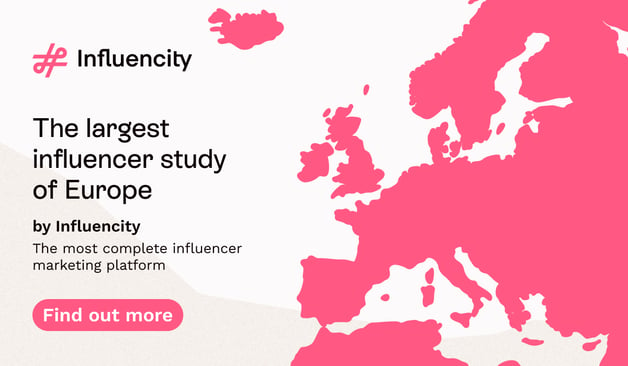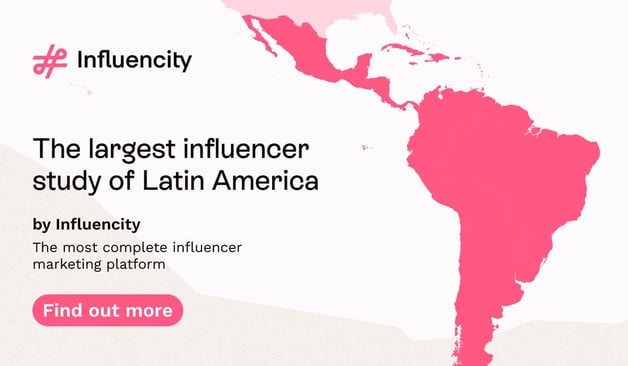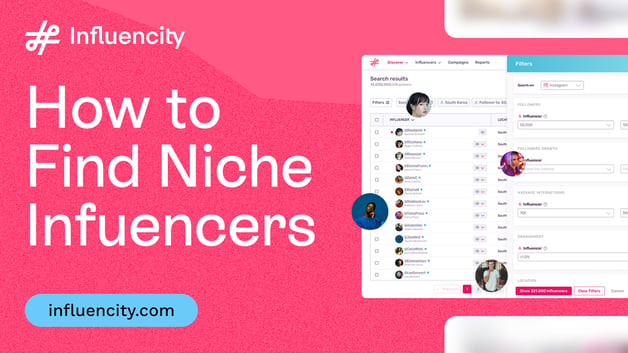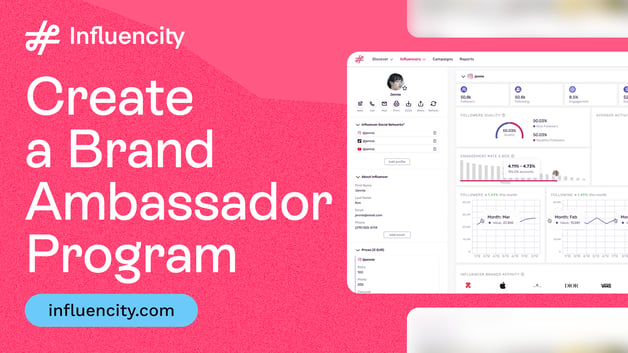Influencer Marketing
The Power of Earned Media Value (EMV): What It Is and How to Measure It
Influencer Marketing
In today’s digital world, where authenticity drives attention, earned media value (EMV) has become one of the most powerful metrics in marketing. It allows brands to assign real monetary value to organic exposure—like influencer mentions, social shares, and media coverage—without relying on paid ads.
With influencer marketing and digital PR at the core of many campaigns, EMV helps brands understand which strategies are truly driving impact. It’s not just about reach or likes—it’s about measuring the credibility, visibility, and trust a brand earns.
But even though EMV is incredibly useful, it’s not always easy to calculate or apply effectively.
That’s where this guide comes in. We’ll help you understand what EMV is, how to use it, and why it should be part of every data-driven marketing strategy.
What Is Earned Media Value?
Earned media value is a metric used to calculate the value generated by different promotional activities, such as PR campaigns and organic third-party mentions. It helps businesses understand the impact of unpaid media exposure and compare it to traditional paid advertising.
One area where EMV is particularly useful is influencer marketing, specifically when influencers mention your brand without direct payment. This includes situations where they talk about your product in a review, feature it in their content, or recommend it to their audience organically. EMV helps you measure the impact of these unpaid mentions by tracking engagement, reach, and the overall reaction to your brand. It allows you to see what is working, identify areas for improvement, and better connect with your target audience to boost brand awareness.
Calculate the ROI of your influencer marketing efforts.
Earned media value can also help you evaluate which influencers might bring the most organic value to your brand. By calculating the market worth of third-party mentions, you can determine which influencers naturally generate strong audience responses and align with your brand’s goals. While EMV does not apply to paid sponsorships, it can still be a helpful tool during negotiations, as it provides a benchmark to assess an influencer’s past organic impact when determining fair pricing for a potential collaboration.
Why Earned Media Value Is Essential in Today’s Marketing
Understanding earned media value (EMV) is one thing, but knowing how to use it to improve your marketing strategy is where the real value lies. Tracking EMV gives you real insight into what is working, what is not, and where you should focus your efforts. It helps you spend smarter, choose the right influencers, and prove the impact of your marketing beyond basic engagement numbers.
Here’s how EMV can help you make better decisions.
1. Track Influencer Performance
Not all influencers bring the same value, and EMV helps you figure out which ones are truly making an impact. Instead of relying on surface-level metrics like follower count or likes, EMV gives you a better understanding of the actual return an influencer delivers. Are they driving conversations? Are people engaging with their content in meaningful ways? By tracking EMV, you can see which influencers bring the most visibility and credibility to your brand. This allows you to make more informed decisions about who to collaborate with and where to focus your influencer marketing efforts.
According to the Influencer Marketing Benchmark Report 2022 by Influencer Marketing Hub, 67% of marketers state that measuring ROI from influencer campaigns is one of their biggest challenges. EMV helps overcome this by tracking organic visibility, earned mentions, and indirect conversions that result from influencer activity — providing a clearer view of true impact.
By tracking EMV, you can see which influencers bring the most visibility and credibility to your brand. This allows you to make more informed decisions about who to collaborate with and where to focus your influencer marketing efforts.

The 2023 edition of the Influencer Marketing Benchmark Report highlights that 42% of brands are now structuring influencer payments similarly to affiliate marketing, tying compensation to performance-based outcomes like EMV. This trend reflects a growing emphasis on measuring real value over vanity metrics.
2. Optimize Budget Allocation
Marketing budgets are not unlimited, so it's essential to invest in strategies that actually work. EMV helps you identify which marketing efforts are driving the most value so you can spend your budget wisely. If a particular influencer or PR strategy is generating strong returns, you can confidently allocate more resources to it. On the other hand, if certain campaigns are underperforming, you can adjust your approach or shift funds elsewhere. Essentially, instead of guessing where to put your money, EMV gives you data-backed insights that help you maximize your return on investment.

Rather than basing decisions on vanity metrics or gut feelings, EMV offers tangible, data-driven insights that show what’s really working.
For example, if a specific influencer campaign or PR activation generates high EMV through organic mentions, shares, and engagement, you can confidently allocate more resources to replicate or scale that success. Conversely, if a campaign is underperforming in terms of earned buzz, EMV reveals that early — giving you the chance to adjust or redirect funds toward more impactful initiatives.
According to Statista, global digital advertising spending is projected to surpass $740 billion by 2025, with a large portion being funneled into social and influencer marketing. In such a competitive space, knowing where every dollar goes is critical.
Additionally, a report by Forbes emphasizes that brands focusing on performance metrics like EMV tend to improve their ROI by up to 30%, simply by reallocating budgets based on what content and partnerships drive real engagement and conversation — not just impressions..png?width=300&height=279&name=White%20%26%20Green%20Modern%20Bar%20Chart%20Graph%20(33).png)
With EMV, marketers are empowered to make smarter financial decisions, identify high-impact campaigns faster, and align spend with real-world value — all of which are crucial in a data-driven marketing ecosystem.
3. Build Credibility with Data-Driven Insights
Making marketing decisions based on gut feelings or assumptions can be risky. EMV provides concrete data that helps you understand how well your brand is performing in the eyes of your audience. When you can measure the impact of influencer partnerships and media coverage, it becomes easier to demonstrate success to stakeholders and refine your strategy over time. EMV also helps you spot trends, track consumer sentiment, and stay ahead of industry changes. By using these insights, you can make more confident, informed decisions that strengthen your brand’s credibility and long-term success.
In today’s competitive marketing environment, credibility is everything. According to a Nielsen study, 92% of consumers trust earned media—such as word-of-mouth, recommendations, and editorial content—over all other forms of advertising. This trust makes EMV a powerful indicator of how authentic and credible your brand appears to your audience.
.png?width=300&height=257&name=White%20%26%20Green%20Modern%20Bar%20Chart%20Graph%20(34).png)
By presenting EMV data in internal reports, pitch decks, or campaign reviews, marketers can demonstrate not just reach and engagement but also tangible impact in terms that resonate with executives and investors.
Tools like Tribe Dynamics and Influencity enable brands to visualize EMV trends over time, helping marketers identify which types of content, influencers, or platforms are generating the most significant buzz. These platforms also assist in detecting shifts in consumer sentiment and emerging viral trends, allowing brands to adapt swiftly and maintain cultural relevance.

Ultimately, EMV empowers marketers to support their creative strategies with concrete data—aligning innovative campaigns with measurable outcomes that build long-term brand trust.
Earned Media Value vs. Paid and Owned Media Value
Earned media value is just one piece of the puzzle. To fully understand its impact, it helps to compare it with paid and owned media value, two other key components of a well-rounded marketing strategy.
Paid media value comes from any advertising you spend money on, like sponsored posts, display ads, or influencer collaborations where you pay for promotion. It gives you direct control over reach, but results can disappear the moment you stop spending.
Owned media value refers to the content and platforms your brand controls, such as your website, blog, social media channels, and email marketing. Since you own these spaces, you can create long-term value without ongoing ad costs. However, building an engaged audience on owned platforms takes time and effort.
Earned media value is different because it comes from people talking about your brand without direct payment. It includes things like customer reviews, social shares, media coverage, and organic influencer mentions. Since earned media is driven by trust and genuine engagement, it often has more credibility and long-term impact than paid media.
By understanding how these three types of media work together, you can create a more balanced marketing strategy that maximizes reach, credibility, and cost-effectiveness.
How to Calculate Earned Media Value
Calculating earned media value (EMV) can help you understand the real impact of your marketing efforts. The way you measure it depends on your campaign goals, content type, and communication channels.
One widely used method combines two key approaches: cost per mille (CPM) and cost per engagement (CPE). CPM focuses on the cost of reaching a certain number of people, while CPE measures how much you are paying for interactions such as likes and comments. Together, these metrics help brands assess their visibility and influence, contributing to a better understanding of their share of voice in the market.
To calculate EMV, you multiply the total number of users who saw your campaign (reach plus impressions) by the average cost per thousand impressions (CPM). Then, you add the total number of interactions (likes and comments) multiplied by your cost per engagement (CPE).
The formula looks like this:
EMV = (Impressions + Reach) x CPM + (Likes = Comments) x CPE
This might seem complicated at first, so let’s break it down step by step.
Breaking Down Impressions, Reach, and Engagement Metrics
Before calculating EMV, it is important to understand the key metrics that shape it.
- Reach is the total number of unique people who see your content. If your campaign reaches 10,000 different users, your reach is 10,000.
- Impressions count the total number of times your content is displayed. If one person sees an ad three times, that counts as three impressions.
- Engagement refers to actions like likes, comments, shares, and clicks. High engagement shows that your content is resonating with your audience rather than just being seen.
These metrics help determine how many people are exposed to your campaign, as well as how much they are interacting with it.
How to Calculate Cost per Mille (CPM)
Cost per mille (CPM), or cost per thousand impressions, is a standard way to measure the cost of reaching a large audience. It is often used in advertising to compare the efficiency of different campaigns.
The formula for CPM is:
-1.png?width=500&height=108&name=White%20%26%20Green%20Modern%20Bar%20Chart%20Graph%20(27)-1.png)
For example, if you spend $20 on a campaign that generates 10,000 impressions, your CPM would be:
-1.png?width=500&height=107&name=White%20%26%20Green%20Modern%20Bar%20Chart%20Graph%20(28)-1.png)
A lower CPM means you are reaching more people for less money, making your campaign more cost-effective.
How to Calculate Cost per Engagement (CPE)
While CPM measures visibility, cost per engagement (CPE) tracks how much you are paying for actual interactions. Engagements include likes, comments, shares, and clicks. In other words, actions that demonstrate audience interest.
The formula for CPE is:
-1.png?width=500&height=102&name=White%20%26%20Green%20Modern%20Bar%20Chart%20Graph%20(30)-1.png)
For example, if you spend $500 on a campaign and get 1,000 interactions, your CPE would be:
-1.png?width=500&height=111&name=White%20%26%20Green%20Modern%20Bar%20Chart%20Graph%20(32)-1.png)
A lower CPE means your content is engaging people at a lower cost, which is a strong sign of an effective campaign.
Simplify Earned Media Value Tracking with Influencity
Tracking earned media value can be tricky, especially if you’re juggling multiple influencer campaigns, PR mentions, and social media interactions. Keeping up with impressions, reach, and engagement across different platforms takes time, and calculating EMV manually for each campaign can be a chore.
With real-time insights into reach, impressions, and engagement, Influencity makes it easier to assess the value of your earned media without spending hours pulling numbers from different sources.
Specifically, with Influencity’s platform you can:
- Track performance in real time. Get instant access to data on reach, impressions, and engagement across your influencer campaigns.
- Compare influencer impact. See which influencers are driving the most value so you can focus on the partnerships that work best.
- Make smarter budget decisions. Understand where your marketing spend is making the most impact and adjust your investments accordingly.
- Measure PR and social mentions. Track how media coverage and organic social shares contribute to your brand’s visibility and credibility.
- Create easy-to-read reports. Get clear insights that help you refine your marketing strategy and show results to stakeholders.
Earned Media Value Example
Now that we’ve covered how earned media value (EMV) is calculated, let’s wrap up today’s post by seeing how it works in a real-world scenario.
OK. Imagine you’re a beauty brand launching an influencer marketing campaign on Instagram and TikTok. You collaborate with a well-known beauty influencer who creates a mix of posts, reels, and stories showcasing your latest skincare product.After running the campaign, you collect the following data:
- 10,000 impressions across Instagram and TikTok
- $2 CPM (cost per thousand impressions)
- 500 engagements, including likes, comments, and shares
- $200 CPE (cost per engagement)
Using the EMV formula:
EMV = (Impressions + Reach) × CPM + (Likes + Comments) × CPE
EMV = (10,000 + 8,000) × $2 + (500 × $200)
EMV = 18,000 × $2 + 500 × $200
EMV = $36,000 + $100,000
Total EMV = $136,000
This means that, based on industry-standard costs for impressions and engagement, the influencer’s organic impact is valued at $136,000. While this is not actual revenue, it gives you a useful benchmark to compare influencer performance, measure brand exposure, and see if your campaign made an impact. Whether you are a beauty brand collaborating with creators, a tech company launching a new gadget, or a fashion label promoting a seasonal collection, EMV helps you understand the real value of your marketing efforts.
L’Oréal and the Power of Earned Media Value
Real Brand Example: L’Oréal and the Power of Earned Media Value L’Oréal, one of the biggest names in global beauty, has publicly recognized the importance of earned media value in measuring the impact of its digital and influencer marketing strategies. Over the years, the brand has shifted significant portions of its budget toward digital initiatives, especially influencer collaborations, content creators, and social media activations.
One standout example was during Paris Fashion Week, where L’Oréal launched a series of influencer-led campaigns across TikTok, Instagram, and YouTube. Instead of focusing solely on paid ads, they invested in product seeding and strategic collaborations with top creators who were invited to attend shows and receive early product access.

The result?
L’Oréal earned millions in EMV, with one campaign generating over $8 million in earned media value within a few weeks.
The brand topped Tribe Dynamics’ EMV leaderboard, outperforming competitors like Estée Lauder and Maybelline in terms of organic influencer buzz.
The majority of this value came from unpaid or organic mentions, showing the power of authentic creator relationships.
This case demonstrates how EMV is not just a vanity metric—it’s a strategic KPI for brands like L’Oréal that want to quantify the real-world impact of buzz, reputation, and influencer authenticity. By tracking EMV, they were able to prove ROI, optimize future influencer partnerships, and allocate resources toward the strategies that generated the most brand love.
Nike and the Power of Earned Media Value at the 2024 Olympics
Nike, a global powerhouse in athletic wear, delivered one of the most impactful earned media campaigns of 2024—proving that when it comes to leveraging cultural moments and influencer partnerships, few do it better. During the 2024 Summer Olympics, Nike led all brands in Earned Media Value (EMV), amassing an impressive $238.8 million, according to media analytics platform WeArisma.
This figure didn’t just place Nike ahead of its athletic competitors—it pushed it well beyond luxury brands like Louis Vuitton ($63.4M) and Dior ($61.5M), both of which also ran high-visibility campaigns during the Olympics.
How Nike Did It: A Strategic Blend of Influence and Culture
At the heart of Nike’s success was its strategic use of Olympic athletes and cultural ambassadors. The brand didn’t just rely on traditional advertisements—it activated a global network of influencers, athletes, and content creators across TikTok, Instagram, and YouTube to organically amplify its message.
One standout contributor was LeBron James, whose involvement generated over $21 million in EMV alone, driven by 9.6 million interactions on social platforms.
But Nike’s success wasn’t limited to individual posts or celebrity power. The brand skillfully tapped into the broader cultural and emotional narratives of the Olympics—celebrating diversity, perseverance, and unity. Its content reflected real stories, user-generated reactions, and behind-the-scenes glimpses of athletes' journeys, all of which helped build authenticity and community engagement.
Why It Matters
The majority of Nike’s Olympic EMV came from unpaid, organic mentions, showcasing the power of brand storytelling, creator partnerships, and cultural relevance. Rather than relying solely on paid media, Nike maximized reach through strategic product placements, seeding, and partnerships that allowed influencers and athletes to tell the brand’s story in their own voice.
What This Tells Us About EMV as a KPI
Nike’s Olympic campaign shows that Earned Media Value is far from a vanity metric. It’s a key performance indicator (KPI) that leading brands now use to track and optimize the real-world impact of their influencer and cultural marketing strategies. With nearly a quarter billion dollars in EMV from a single event, Nike demonstrated that when brands lead with authenticity and relevance, they don’t just get visibility—they get lasting brand equity and cultural resonance.
Tags:
EMV


![Calculator EMV Calculator [ + Influencer Marketing Basic Metrics]](https://no-cache.hubspot.com/cta/default/3449185/interactive-170855647853.png)




















%20and%20How%20Can%20They%20Benefit%20Your%20Brand%20article.jpg?length=628&name=What%20Are%20Key%20Opinion%20Leaders%20(KOL)%20and%20How%20Can%20They%20Benefit%20Your%20Brand%20article.jpg)








